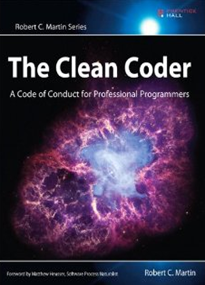Olá pessoal!
Neste artigo gostaria de compartilhar um trecho do livro “The Clean Coder”, de Robert C. Martin (Uncle Bob), que trata de ética e conduta profissional para nós, profissionais de desenvolvimento de software. O trecho aborda dois tópicos de extrema relevância. O primeiro é sobre decisões políticas ou baseadas apenas em questões financeiras de curto prazo e o segundo é sobre a responsabilidade que um profissional de software responsável por decisões técnicas (seja um arquiteto de software ou qualquer outro papel correspondente) tem ao assumir tal papel.

Em um projeto, diferentes stakeholders demandam diferentes requisitos não-funcionais, muitas vezes conflitantes entre si. Gerentes de projetos, por exemplo, em geral priorizam o prazo estabelecido com as áreas de negócios (time-to-market). Áreas que manterão o sistema (que aplicação mudanças evolutivas / corretivas, por exemplo), demandam um sistema que seja modificável (modifiability). Um sistema projetado para ser modificável, em geral, leva mais tempo para ser construído. E esta aí o primeiro e mais comum conflito. A figura mais abaixo (extraída de materiais do Software Engineering Institute – SEI) representa este cenário.
Neste contexto, se por um lado um gestor tem a responsabilidade de não tomar decisões baseadas apenas em questões políticas e financeiras de curto prazo, um arquiteto de software tem o dever, a responsabilidade, de apontar de todas as formas possíveis, os possíveis riscos que uma determinada decisão de projeto (seja de design, por exemplo) pode apresentar.
 A história descrita por Bob Martin fala de uma decisão política / financeira, tomada em um lançamento de uma nave aeroespacial, que não levou em consideração os riscos levantados pelos engenheiros responsáveis, culminando na perda de sete vidas. Veja a seguir.
A história descrita por Bob Martin fala de uma decisão política / financeira, tomada em um lançamento de uma nave aeroespacial, que não levou em consideração os riscos levantados pelos engenheiros responsáveis, culminando na perda de sete vidas. Veja a seguir.
At 11:39 AM EST on January 28, 1986, just 73.124 seconds after launch and at an altitude of 48,000 feet, the Space Shuttle Challenger was torn to smithereens by the failure of the right-hand solid rock booster (SRB). Seven brave astronauts, including high school teacher Christa McAuliffe, were lost. The expression on the face of McAuliffe’s mother as she watched the demise of her daughter nice miles overhead haunts me to this day.
The Challenger broke up because of hot exhaust gasses in the failing SRB leaked out from between the segments of its hull, splashing across the body of the external fuel tank.
… The engineers at Morton Thiokol who designed the SRB had known that there were problems with the O-rings [SRB component that was identified as the cause of the incident], and they had reported those problems to managers at Morton Thiokol and NASA seven years earlier.
… The engineers had designed a repair for the problem, but implementation of that repair had been long delayed.
… In short, the engineers knew that the risk was too high. The engineers acted on that knowledge. They wrote memos raising giant red flags. They strongly urged Thiokol and NASA managers not to launch. In an eleventh-hour meeting held just hours before the launch, those engineers presented their best data. They raged, and cajoled, and protested. But in the end, the managers ignored them.
… Despite all the protest and memos, and urgings of the engineers, the managers believed they knew better. They thought the engineers were overreacting. They didn’t trust the engineers’ data or their conclusions. They launched because they were under immense financial and political pressure. They hoped everything would be just fine.
These managers were not merely foolish, they were criminal. … They made a decision they had no right to make. They usurped the authority of people who actually knew: the engineers.
But what about the engineers? Certainly the engineers did what they were supposed to do. They informed their managers and fought hard for their position. They went through the appropriate channels and invoked all the right protocols. They did what they could, within the system – and still the managers overrode them.
E por fim, Bob Martin conclui: ”… As an engineer, you have a depth of knowledge about your systems and projects that no managers can possibly have. With that knowledge comes the responsibility to act.”
É claro que como arquitetos de software muito dificilmente estaremos envolvidos em decisões que poderão implicar em vida ou morte de pessoas. Porém, é certo que determinadas decisões mal tomadas implicarão, a médio/longo prazo, em custos de manutenção e de propriedade mais altos, tempos de entrega mais longos (time-to-market) e em requisitos não atendidos. Quando tais problemas perduram, toda uma área de TI passa a ser mais um custo necessário, ao invés de uma área estratégica para o crescimento da companhia.